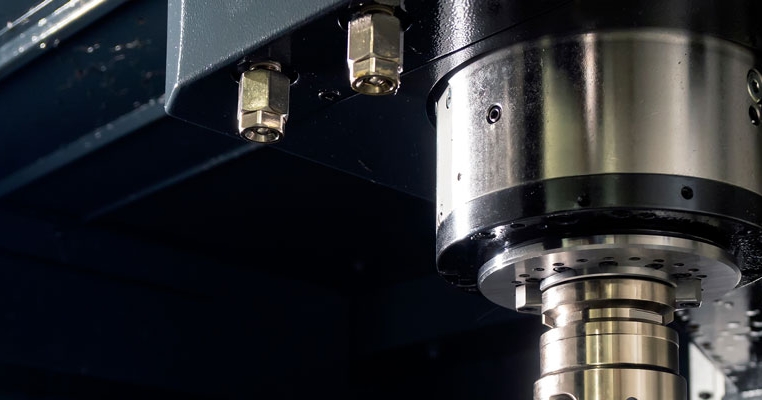Selecting the right CNC Spindle for your specific application is a crucial step in achieving optimal performance in CNC machining. With so many spindle types and specifications available, choosing the ideal spindle can seem overwhelming. The spindle’s power, speed, and compatibility with your machine’s requirements can directly impact the precision, efficiency, and lifespan of your CNC operations. In this blog, we’ll guide you through the key factors to consider when choosing a CNC spindle that aligns with your machining needs.
Why Choosing the Right CNC Spindle Matters
Choosing the appropriate CNC Spindle for your application has several significant benefits:
- Increased productivity: The right spindle enables faster and more precise machining.
- Cost efficiency: Using a spindle suited to your needs helps prevent wear, breakdowns, and maintenance costs.
- Enhanced quality: A well-matched spindle minimizes errors and improves the accuracy of your final product.
- Extended machine life: Using the proper spindle reduces strain on the machine, contributing to a longer operational life.
Selecting the right spindle involves considering factors like material type, machining speed, precision requirements, and power needs.
Types of CNC Spindles
Understanding the different types of CNC Spindles can help you make an informed decision based on the demands of your machining processes.
1. Belt-Driven Spindles
Belt-driven spindles are popular for their flexibility and cost-effectiveness. They are connected to a motor via a belt and are known for their ability to deliver high torque at lower speeds.
- Advantages: High torque at low speeds, cost-effective, and relatively easy to maintain.
- Disadvantages: Lower RPM ranges and potential for belt wear over time.
Best for: Applications requiring high torque and low speeds, such as milling and cutting harder materials.
2. Direct-Drive Spindles
Direct-drive spindles connect directly to the motor, allowing for higher RPMs and better speed control. They are often used in applications that require high speed and precision.
- Advantages: High RPMs, low vibration, and better accuracy.
- Disadvantages: Higher cost and potential for overheating in continuous operations.
Best for: High-precision work, such as engraving or working with soft materials at high speeds.
3. Air-Cooled Spindles
Air-cooled spindles use fans to dissipate heat, making them relatively simple to operate and maintain. They are ideal for smaller CNC machines or setups without water-cooling systems.
- Advantages: Simple design, easy to install, and suitable for various environments.
- Disadvantages: Limited cooling capability, which can be insufficient for prolonged heavy-duty work.
Best for: Hobbyist projects and light-duty applications where cooling demands are minimal.
4. Water-Cooled Spindles
Water-cooled spindles utilize circulating water to keep the spindle cool, making them ideal for high-speed and long-duration applications.
- Advantages: Better cooling, allowing for extended use and higher speeds without overheating.
- Disadvantages: Requires additional plumbing for the cooling system, which can complicate installation.
Best for: Continuous high-speed machining and high-power applications that generate significant heat.
Key Factors to Consider When Choosing a CNC Spindle
Selecting the right CNC Spindle involves several critical considerations. Here are the main factors to keep in mind:
1. Power Requirements
The power rating of a spindle, often measured in kilowatts (kW) or horsepower (HP), determines how much cutting force it can generate. Different materials and machining operations require varying levels of power.
- Low-power spindles (up to 1.5 kW) are typically used for soft materials and light-duty tasks.
- Medium-power spindles (1.5 to 5 kW) are suitable for general-purpose machining, including wood, plastic, and softer metals.
- High-power spindles (5 kW and above) are necessary for heavy-duty applications, such as cutting thick metal or high-precision milling.
Tip: Choose a spindle with enough power for your heaviest application to ensure it can handle all of your machining needs.
2. Speed (RPM)
The speed range of a CNC Spindle is another essential factor, as different materials and cutting tools perform best at specific RPMs.
- Low RPM (up to 10,000): Suitable for harder materials, such as steel, which require slower speeds for optimal cutting.
- Mid RPM (10,000 to 20,000): Ideal for general machining applications with wood, plastic, and some metals.
- High RPM (20,000 and above): Necessary for fine engraving or working with very soft materials that require high-speed machining.
Tip: Ensure your spindle’s speed range matches the requirements of the materials you typically work with.
3. Tool Holder Compatibility
Spindle tool holders come in various types, such as ER collets, ISO, BT, or HSK holders. Ensure that the CNC Spindle you choose is compatible with the tooling you plan to use.
- ER collets are versatile and commonly used for general-purpose machining.
- HSK holders offer high precision and are ideal for high-speed operations.
Tip: Choosing a spindle with versatile tool compatibility can save you time and money on tool changes.
4. Cooling System
As discussed, spindles come with either air or water-cooling options. Choosing the right cooling system for your CNC Spindle can affect its performance and durability.
- Air cooling is simpler and less costly but may not provide enough cooling for heavy-duty or high-speed tasks.
- Water cooling offers superior cooling but requires more complex installation and maintenance.
Tip: Consider water-cooled spindles for continuous, high-speed operations, while air-cooled spindles are sufficient for lighter, intermittent use.
5. Precision Requirements
For high-precision applications, such as engraving or 3D contouring, choose a CNC Spindle that minimizes vibration and provides accurate control over speed and torque.
- High-precision spindles generally have lower vibration and can achieve better finish quality on fine details.
- Standard precision spindles are suitable for general-purpose machining where extreme accuracy isn’t necessary.
Tip: For applications with tight tolerances, invest in a high-precision spindle to avoid inaccuracies.
Practical Tips for Choosing Your CNC Spindle
Here are some additional tips to guide your spindle selection:
- Assess your needs: Consider the types of materials you frequently work with, the accuracy required, and the average runtime of your CNC machine.
- Check compatibility: Ensure the spindle is compatible with your CNC machine’s specifications and intended workload.
- Invest in quality: Quality spindles may cost more upfront but offer better durability and performance, saving money in the long run.
- Seek expert advice: Consult with CNC spindle experts or manufacturers if you’re unsure about which spindle is best suited to your application.
FAQs
1. What’s the best spindle for working with aluminum?
- A medium- to high-power CNC Spindle with a mid- to high-speed range and water cooling is ideal for aluminum machining, as it requires a balance of power and precision.
2. Can I upgrade my CNC machine to a more powerful spindle?
- Yes, you can upgrade your spindle, but ensure that the machine’s frame and control system can handle the added power and speed requirements.
3. Is it worth investing in a high-precision spindle for general machining?
- For general machining, a standard spindle is often sufficient. However, if precision and surface finish are critical, a high-precision spindle may be worth the investment.
4. How does spindle speed affect surface finish?
- Higher spindle speeds can create smoother surface finishes but may require better cooling and precision. For finer finishes, adjust speed and feed rate accordingly.
5. What maintenance is required for a CNC spindle?
- Regular cleaning, lubrication, and temperature monitoring are essential. Maintenance frequency depends on the spindle’s workload and operating conditions.
Conclusion
Choosing the right CNC Spindle for your application is essential for maximizing performance, achieving precision, and extending the life of your CNC machine. By carefully considering factors like power, speed, cooling, and precision requirements, you can select a spindle that aligns perfectly with your machining needs. Proper spindle selection not only improves machining quality but also enhances productivity and reduces overall operational costs. Investing time in understanding your spindle options will ensure you make a choice that supports your long-term CNC goals.




